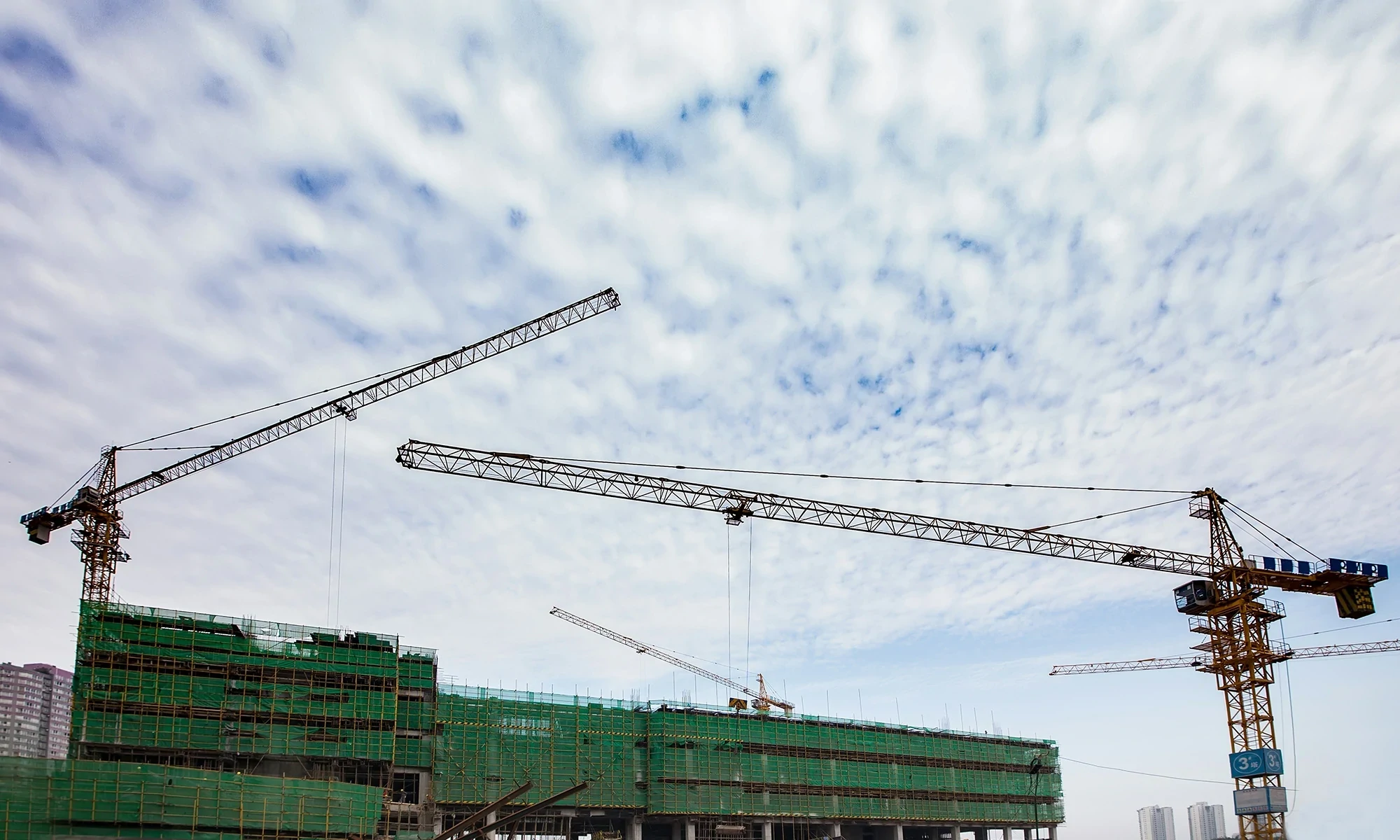Subcontractor plays a pivotal role in the modern construction industry, enabling main contractors to effectively manage large and complex projects while leveraging specialized expertise. This article explores the concept of subcontracting, its benefits, challenges, and significance in the construction ecosystem. By delving into the advantages and potential drawbacks, we aim to provide a comprehensive overview of subcontractors’ impact on project delivery and industry dynamics.
What is a Subcontractor?
A subcontractor is a third-party company or individual hired by the main contractor (also known as the general contractor or prime contractor) to carry out specific aspects of the construction project entrusted by the department, agency, or private entity. The main contractor is typically responsible for overseeing the entire project, managing all subcontractors, and coordinating their work to ensure the project progresses in line with the quality assurance plan smoothly and on schedule.
Subcontractors are usually hired for their expertise in particular trades or services, such as electrical work, plumbing, roofing, carpentry, painting, concrete pouring, and more. They have specialized knowledge, skills and equipment in their respective areas, making them crucial to the successful completion of the project.

What is Subcontracting?
Subcontracting is the process of awarding specific parts of the construction project to subcontractors. The main contractor enters into separate agreements with each subcontractor, outlining the scope of work, timelines, payment terms, and other relevant details.
Why Subcontracting?
Subcontracting in construction is a prevalent practice that brings several advantages to main contractors and the overall project execution. It becomes particularly valuable when the scope of a project demands a diverse range of capabilities beyond what a single general contractor can provide. In such cases, subcontractors take part in the smaller and more specific works to assist the contractor by keeping costs under control and mitigating overall project risk.
By subcontracting, resource allocation for general main contractors is optimised and contractors can focus on project management and coordination while subcontractors efficiently manage their workforce, equipment, and materials. The other major benefit is often lower overhead costs, contributing to potential cost savings for the main contractor and clients.
Also, read: Importance Of Personal Protective Equipment (PPE) In Construction Zones
Role and Resposubulites of Subcontractor
The role of the subcontractor includes:
- Maintaining Quality: The role of the subcontractor is to carry out the given work in time ensuring the quality of work entrusted by the department and the main contractor.
- Maintaining a Safe: Their role also includes the execution of work safely by creating a work area free from hazards, debris and any potential dangers that could pose a threat to workers’ safety.
- Creating a Clean Working Environment: This includes regular cleaning, proper waste disposal, and maintaining orderliness on the work site.
- Identifying Hazards and Risks: Before, during, and after work, subcontractors should assess the site for potential hazards or risks that could endanger the workforce or impact the project’s success. Identifying these risks allows for timely mitigation measures.
Some of a subcontractor’s responsibilities should always include:
- Keeping Records: Maintaining accurate records of incidents, identified risks, and issues during the project is crucial for future reference and improvement. These records can aid in identifying patterns, making adjustments, and enhancing safety protocols for subsequent projects.
- Providing Essential Facilities for Worker Welfare: Subcontractors should ensure that basic facilities are available for workers’ well-being. These may include clean drinking water stations, designated rest areas for breaks, and adequate toilet facilities.

Advantages of Subcontracting
There are several advantages to the main contractor, including:
- On-time Completion of Project: They can accelerate project timelines since they are usually experts in their respective fields. The main contractor can have the benefits of having the work on schedule and completing it on time which otherwise would lead to delay in the project completion on time eventually penalty and financial losses.
- Quality Assurance: Some work requires special attention and sets of skills to meet the quality standards set forth in the contract which the main constructor would lack. Thus, this quality of the subcontractor brings the quality into reality.
- Risk Mitigation: When you work with subcontractors, you can spread the risks associated with a project. If there are any issues or delays, you can negotiate terms and conditions in the contract to protect your interests.
- Focus on Core Competencies: Subcontracting non-core activities allows the main contractor to focus on its primary strengths and strategic objectives while leaving specialized tasks to those with expertise in those areas.

Also, read: What Is Rate Analysis In Construction? | Analysis Of Rate
Tips for Selection of Subcontractor
The selection of subcontractors is a critical process that can significantly impact the success of a construction project or any project involving multiple specialized tasks. Here are some steps and considerations for selecting subcontractors:
- Prequalification and Evaluation: Before inviting potential subcontractors to bid or propose a project, it’s essential to prequalify them based on their capabilities, experience, and financial stability. Look into their past performance, expertise, and track record with similar projects.
- Clearly Define Requirements: Clearly outline the scope of work and specific requirements for the subcontractor. This includes detailing the tasks they will be responsible for, the timeline for completion, quality standards, and any other specific project requirements.
- Request for Bids/Proposals: Invite qualified subcontractors to submit their bids or proposals based on the defined requirements. The request should provide all necessary project details to ensure the subcontractors can provide accurate and competitive proposals.
- Competitive Bidding: When evaluating bids or proposals, consider both the cost and the value offered. It’s not always about choosing the lowest bid; you should assess the subcontractor’s capability to meet the project’s needs and deliver quality work.
- Experience and Expertise: Look for subcontractors with experience in similar projects or tasks. Their expertise in the specific area will increase the likelihood of successful project execution.
- Financial Stability: Consider the financial stability of the subcontractor. Ensure they have the necessary resources to carry out their tasks, purchase materials, pay their workforce, and handle unexpected expenses.
- Reputation and Past Performance: Check references and review the subcontractor’s past performance on previous projects. Reach out to their previous clients to gain insights into their professionalism, reliability, and ability to meet deadlines.
- Safety Record: Safety is paramount in any construction project. Review the subcontractor’s safety record, safety protocols, and commitment to maintaining a safe work environment.
- Insurance and Licensing: Verify that the subcontractor has the required licenses and certifications to perform the work. Additionally, ensure they carry adequate insurance coverage to protect against potential liabilities.
- Compatibility and Communication: Evaluate how well the subcontractor communicates and collaborates with your team. A good working relationship is essential for a successful partnership.
- Legal and Contractual Considerations: Ensure all necessary legal aspects are addressed, including the signing of a detailed contract that outlines the scope of work, responsibilities, timelines, payment terms, and dispute resolution procedures.
Challenges of Subcontracting
- cause confusion about the rights and responsibilities of your organisation versus those of your subcontractors
- make it more difficult for us to monitor the performance and assess the quality of the services contracted by us
- expose us to risk if a subcontractor doesn’t maintain adequate insurance
- inconvenience clients by requiring them to deal with different organisations.
Conclusion:
Subcontracting remains a vital aspect of the construction industry, enabling the successful completion of large and complex projects. While presenting numerous advantages, it also demands careful planning, communication, and collaboration. By understanding the intricacies of subcontracting and embracing its potential, the construction industry can continue to thrive and meet the challenges of tomorrow.
Also, read: What Is The Measurement Book In Civil Engineering And Construction?
FAQs:
Q: Is Subcontracting allowed in the construction industry?
Ans: Subcontracting is generally allowed and widely practised in the construction industry. It is a legitimate business practice that helps main contractors manage large projects efficiently by delegating specialized tasks to subcontractors with expertise in specific areas.
Q: What is the limit for subcontracting?
Ans: Subcontracting limits in the construction industry can vary depending on the country, region, and specific contract requirements. Different construction projects may have different subcontracting limitations, and these limits are often defined in the contract documents.
In the United States, for example, federal government contracts may have specific subcontracting limitations, especially for contracts awarded to small businesses under various socio-economic programs. The Federal Acquisition Regulation (FAR) sets guidelines for subcontracting limitations for small business set-aside contracts, which vary depending on the nature of the work. The subcontracting limits for small business set-aside contracts were as follows:
– Construction Contracts (general construction): 85% of the total contract amount must be performed by the prime contractor’s employees.
– Special Trade Contracts (e.g., plumbing, electrical, HVAC): 75% of the total contract amount must be performed by the prime contractor’s employees.
Q: What are the works that can be subcontracted in the construction industry?
Ans: There are various works and tasks that can be subcontracted to specialized contractors or subcontractors. These are as follows:
1. Specialized Trades: This includes tasks such as electrical work, plumbing, HVAC (heating, ventilation, and air conditioning), fire protection systems, and elevator installation. These trades often require highly skilled and licensed professionals.
2. Concrete and Masonry Work: Subcontractors may handle tasks like concrete pouring, block or bricklaying, and other masonry work.
3. Roofing and Waterproofing: Installing roofing materials, waterproofing systems, and related tasks are commonly subcontracted.
4. Mechanical Systems: This includes subcontracting for mechanical systems like elevators, escalators, mechanical ventilation, and other equipment installations.
5. Electrical Systems: In addition to general electrical work, specialized electrical tasks like wiring for data and communication systems are often subcontracted.
6. Plumbing and Piping: Subcontractors can take care of plumbing installations, piping systems, and related work.
7. Site Preparation and Excavation: Clearing the construction site, excavating, and preparing the ground for construction are sometimes subcontracted.
8. Landscaping and Exterior Work: This may include tasks like planting, hardscaping, and other exterior beautification work.
9. Environmental and Remediation Services: In cases where a site requires environmental remediation or hazardous material handling, specialized subcontractors may be involved.
10. Surveying and Geotechnical Services: Surveying the site and conducting geotechnical investigations may be subcontracted to professionals with expertise in these areas.
11. Structural Steel and Metalwork: Fabrication and installation of structural steel elements or metalwork may be subcontracted.
12. Specialty Systems: Certain projects may require subcontractors for specialized systems like security, audio-visual installations, and other technological components.
13. Finishing Trades: Subcontractors might handle interior finishing work, such as carpentry, drywall installation, painting, flooring, and tiling.
References:
- 52.219-14. Limitations on Subcontracting. | Acquisition. GOV. (n.d.). ACQ.gov. https://www.acquisition.gov/far/52.219-14
- Mike. (2020, August 17). The Role Of A Subcontractor – MH Williams. MH Williams. https://www.mhwilliams.com/the-role-of-a-subcontractor/
![]()







